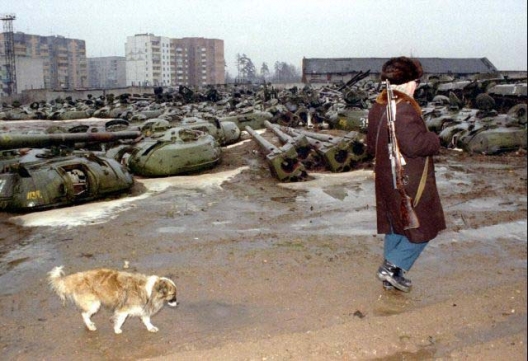 Over the past 20 years, 70,000 tanks, combat aircraft and helicopters and other military equipment have been destroyed in Europe as a result of the treaty on Conventional Armed Forces in Europe (CFE) introduced at the end of the cold war. It was a major instrument in the co-operative Euro-Atlantic security architecture. It not only paved the way for the destruction of military equipment, it also established an inspection and verification regime that led to an unprecedented level of transparency. . . .
Over the past 20 years, 70,000 tanks, combat aircraft and helicopters and other military equipment have been destroyed in Europe as a result of the treaty on Conventional Armed Forces in Europe (CFE) introduced at the end of the cold war. It was a major instrument in the co-operative Euro-Atlantic security architecture. It not only paved the way for the destruction of military equipment, it also established an inspection and verification regime that led to an unprecedented level of transparency. . . .
But this system is now in crisis. Implementation of the CFE treaty has come to a partial halt. We risk losing the fruits of years of work and confidence-building. Some may ask, why bother if Europe is at peace today? In short: because recent history has shown that local and sub-regional conflicts can develop into military confrontations with serious consequences for Europe and neighbouring regions. Peace and security in the Euro-Atlantic area have not come about by themselves. Trust and confidence as a necessary basis need to be constantly earned and maintained. . . .
A new system must be built on the basis of existing structures and focus on confidence-building measures and increased transparency. It should confirm the basic principles of international law and neighbourly relations. Since real and perceived threats still vary among countries in the Euro-Atlantic area, a modernised agreement should, if interested states call for it, provide instruments tailored to subregional needs.
Radoslaw Sikorski, Guido Westerwelle and Villy Sovndal, Foreign Ministers of Poland, Germany and Denmark respectively.
Image: Remnants of Soviet-era tanks and cannons "reduced" into scrap in accordance with the CFE Treaty (photo: NATO)

